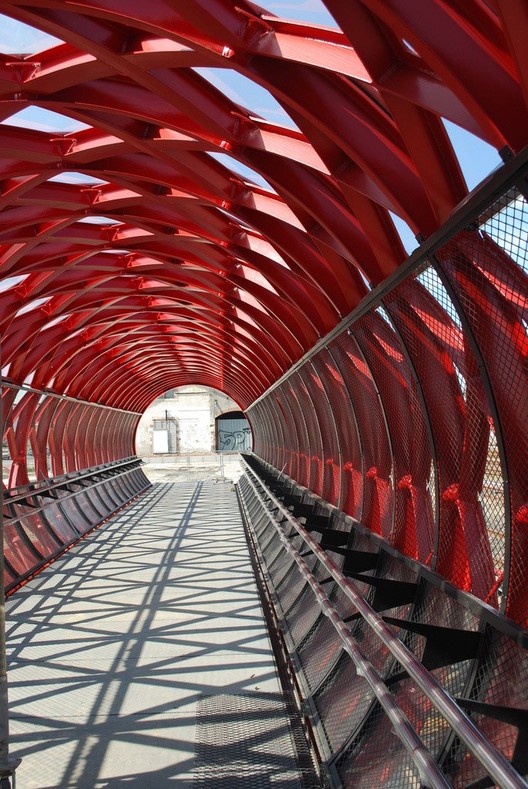
The project for a footbridge located in Roche-sur-Yon was commissioned as a collaborative work in between HDA Paris, who has a previous experience with the footbridge they did in Turin for the Olympic Village in 2006 and Bernard Tschumi, who recently finished the Acropolis Museum.
The program for the extension of the TGV network in southern France includes a passage through the town of la Roche sur Yon. The town is modernizing the train station and replacing an 1890’s footbridge over the railway tracks. The town is separated by the railway tracks into two parts: the historical central neighborhood, which contains the ‘Pentagon’ planned by Napoleon and it’s contemporary counterpart with its modern facilities (stadium, school and residential zones).The ambition of the town, is not only to create a symbolic link between the two neighborhoods, but equally to celebrate the arrival of the TGV.




























